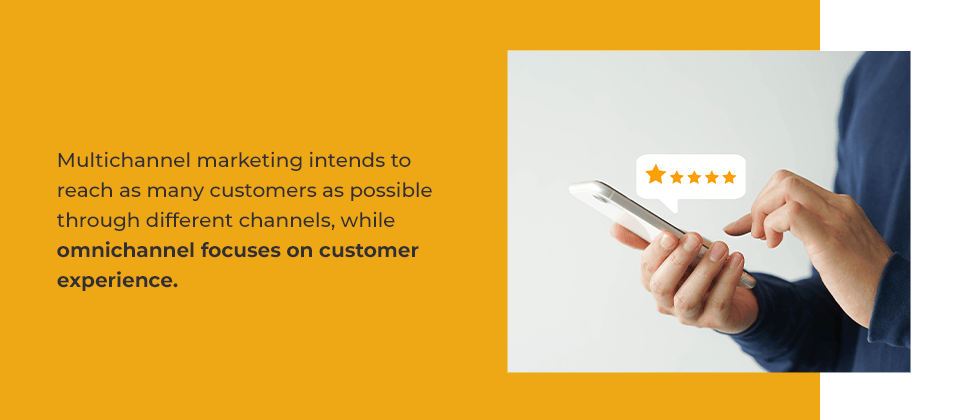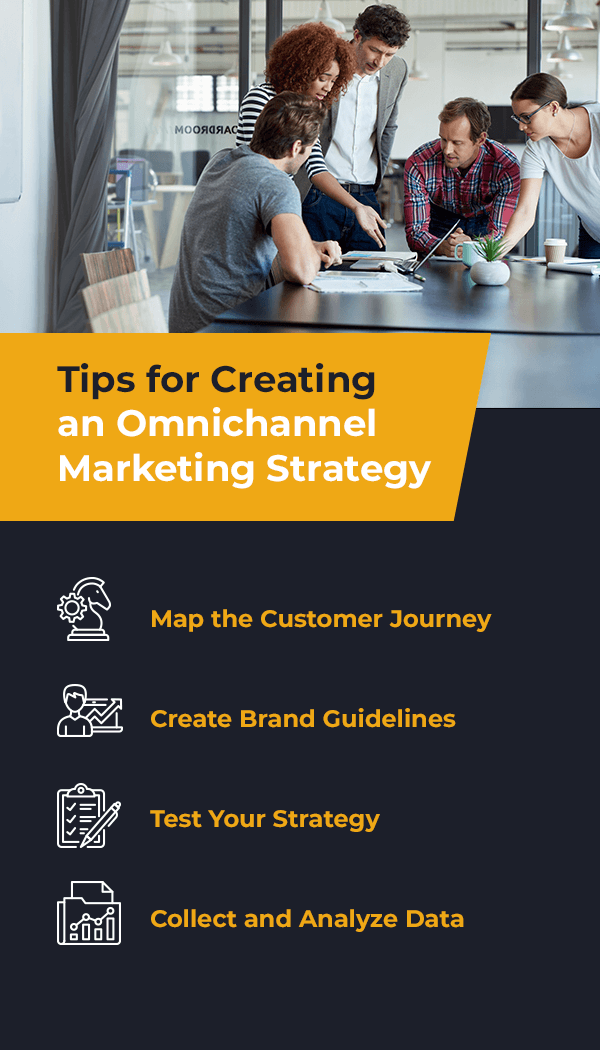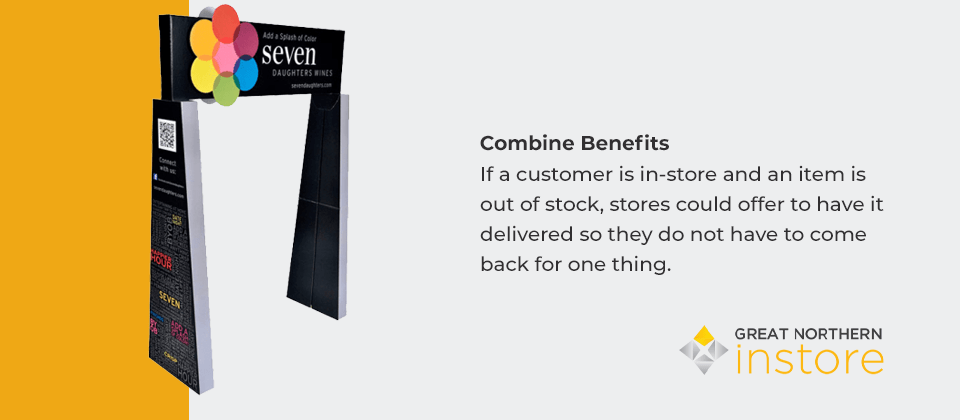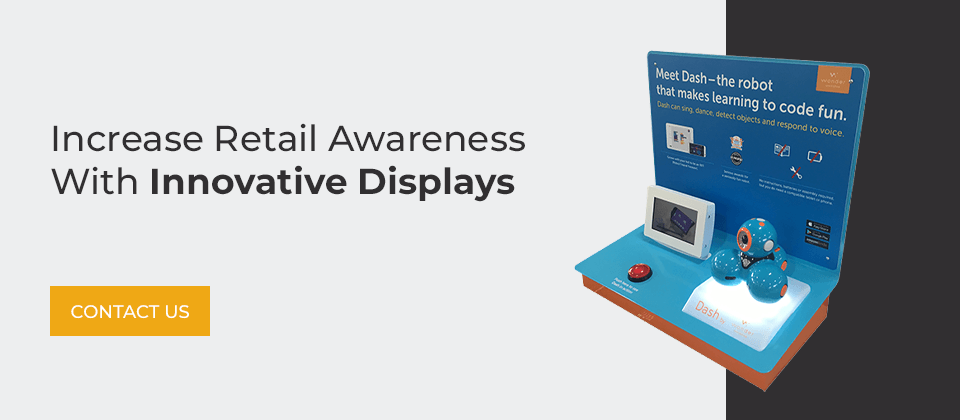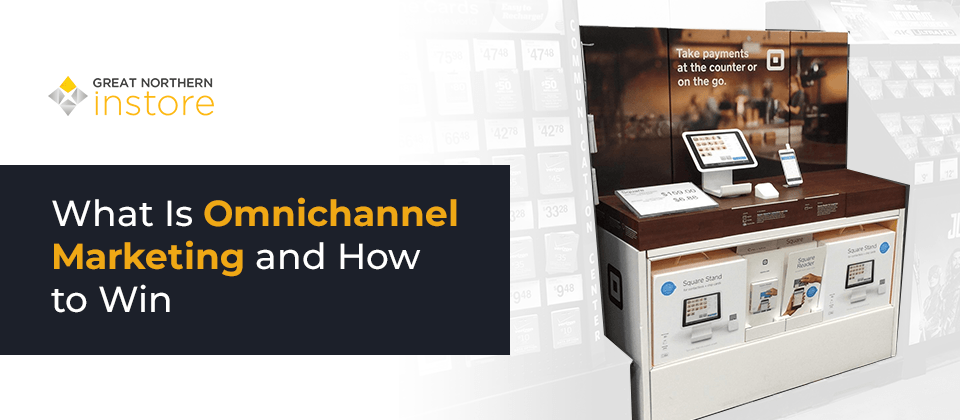
Omnichannel marketing integrates the various physical and digital channels organizations use to interact with customers. This integration creates a consistent brand experience and offers more opportunities for customer fulfillment. For example, an omnichannel marketing strategy could give customers the ability to purchase a product online, in-store or both.
An omnichannel approach to marketing lets customers engage with brands on their terms, increasing customer satisfaction. Organizations can improve business by giving customers numerous options to interact with a brand. Today’s customers expect companies to offer multiple purchase options. Businesses lose 10-30% of potential sales when they can not do this.
Omnichannel vs. Multichannel Marketing
Omnichannel and multichannel marketing strategies engage customers across multiple platforms, but they are not the same. Here are some of the differences between the two:
- Focus: Multichannel looks at how customers complete a transaction on a specific channel. Omnichannel considers how to create the best user experience as customer journeys between multiple channels.
- Integration: Omnichannel marketing ensures an integrated, seamless experience across channels. The numerous channels in a multichannel approach usually operate independently.
- Intent: Multichannel marketing intends to reach as many customers as possible through different channels, while omnichannel focuses on customer experience.
Benefits of Omnichannel Marketing
Many brands agree that an omnichannel marketing strategy can yield the best results. Customers are accustomed to seeing similar messages from various brands and have become selective. Creating customer engagement with omnichannel differentiates your brand and offers many benefits, including:
- Better user experience: Omnichannel focuses on the customer, not the platform. Focusing on the customer helps brands improve user experience and increase retention rates and sales.
- Consistent brand image: Creating a seamless strategy across multiple channels means your brand and tone will be easily identifiable. You can increase your loyalty and targeted messaging by basing your image on the user experience and targeting different channels.
- Increased revenue: Since customers interact with brands across multiple channels, they are more likely to remember and purchase those products. Additionally, more targeted messaging increases brand loyalty.
- Better attribution data: An omnichannel marketing strategy offers plenty of data to improve strategy. This data includes customer journey and preferences and campaign effectiveness.
Tips for Creating an Omnichannel Marketing Strategy
Omnichannel marketing focuses on a user’s overall experience. Focusing on intent is crucial when developing this type of marketing strategy. Here are some tips to help you design an omnichannel marketing strategy:
Map the Customer Journey
You must create customer journey maps for each of your audience segments. Customer journey maps track the steps between a customer discovering your brand and making a purchase. These maps let you create a more targeted campaign by considering user experience and interface, customer interests and factors outside your control that may impact the path to purchase, such as economic factors. You can segment the users into different categories based on their behavioral patterns.
Having a solid map of the customer journey also allows you to focus on the most impactful tactics for meeting your targets.
Create Brand Guidelines
Companies should maintain their image by keeping their message consistent across all platforms. Ensure the message you send audiences is relevant to the user. It must appear when they are most active on the channel they use frequently. Keep your imaging consistent across in-store and retail displays, too.
Omnichannel strategies depend heavily on consistent imagery, so tactics like cross-channel advertising or emails about an abandoned card must use clear, aligned brand guidelines. For example, if you send an email about an abandoned cart with a different logo, your customer may not recognize your company at all and immediately send the email to spam.
Creating clear guidelines for your advertising platforms ensures your message and image are cohesive.
Test Your Strategy
An essential aspect of omnichannel marketing is continuously testing the effectiveness of your strategy. By knowing the effectiveness of your strategy, the marketing team can update it to optimize results. This includes making adjustments to messaging and your target audience.
Collect and Analyze Data
An essential aspect of an omnichannel marketing strategy is collecting timely and accurate customer data. The data you collect lets you understand when your target audience interacts with your brand, what message has the most engagement, what device they use and what products or features they want. This data will help you update your strategy to enhance user experience. Ensure you have the necessary tools to collect this data across all channels.
After the data is collected, a platform and team must analyze it to provide insight. Any brand that wants to implement omnichannel marketing must have an analytics platform that can distill the data quickly so a team can adjust the running campaign to meet customer needs.
Tips for Omnichannel Marketing in Digital Vehicles
As you embark on an omnichannel strategy across digital mediums, keep these marketing tips in mind.
Mobile Apps
As of 2021, 85% of Americans own smartphones. Smartphones make life more convenient for users who can do a million things with a button, including shopping online and searching for items. Apps can be a useful addition to your marketing strategy, helping you expand and better connect with your audience. They allow you to offer more value to your customers, create a new way to reach them, collect more insights and build your brand.
To include mobile apps in your marketing strategy, focus on the different customer phases:
- Welcome new users: Ensure your strategy highlights the various features of your app.
- Keep users engaged: If your users are not engaged, they will uninstall your app.
- Re-engage users: You can re-engage inactive users with personalized push notifications, but ensure they do not appear annoying or spammy.
- Convert users into brand advocates: Word-of-mouth is one of the best and most trusted forms of advertising. One of your goals with omnichannel marketing should be to convert your users into brand advocates. This is easy to achieve — you have to give them something to praise, like a positive experience or a great product.
E-Commerce
Omnichannel marketing plays a pivotal role in the world of e-commerce. There are countless e-commerce businesses, so customers have endless choices. This makes the market extremely competitive, and the only way you can acquire, engage and retain customers is with positive customer experiences. Here are some tips for fostering strong customer relationships with an omnichannel strategy:
- Review existing strategy: Monitor all your channels and think like a customer to develop ways to improve your strategy.
- Analyze customer interactions: Collect data on how customers behave online and offline and what factors influence their purchasing decisions.
- Segment audience: It is easy to segment your audience based on their preferences and behaviors. This will help you more precisely target them, increasing the effectiveness of your strategy.
- Personalize channel content: You can target your customers through text messages, emails and push notifications, but ensure each channel has personalized messages.
- Retarget customers: Commonly, a customer will not buy a product the first time they see an ad. Showing them ads on different platforms will make them recall the previous ads and increase their chance of purchasing from your company.
- Consider automation tools: A marketing automation tool can help personalize your messages, segment your audience, schedule your campaign and measure its effectiveness.
- Test strategy: Regularly test your strategy so you know what is working and what is not and can update it accordingly.
- Maintain consistent brand materials: If you sell your items on retailer websites, such as Amazon.com and Target.com, pay attention to your brand assets. Images and descriptions should all match, so your customers know exactly what to expect and can recognize you across retailers.
Online and In-Store Retail Media
Retail media is marketing to customers when they are at or near their point of purchase. You can use retail media online or in-store, making it an excellent omnichannel marketing tactic. One of the ways to use it in-store is with innovative displays. Properly designed and executed displays increase brand awareness and customer purchases.
Think of in-store displays as giant billboards. They catch customers’ attention and draw them to your brand and products. Even if they were not previously aware of your brand, they are now. Once you have their attention, you can persuade them to purchase by discussing the benefits of your products.
Incorporating in-store displays allows you to reach a greater target audience. A recent study found that 54% of consumers prefer to shop in stores rather than online. Many brands compete for in-store display spots in big-name retail stores like Target to reach a wider audience. Target, and many other chain stores, require companies to purchase an advertising spot on their website to display their products in-store.
Most companies find this purchase worthwhile because it allows them to advertise their brands online and in-store. Both forms of advertising are equally important because they reach different audiences. Whether people prefer to shop online or in-store or browse products online and purchase them in-store, you can effectively target them when you focus on retail media.
Tips for Connecting In-Store and Digital Marketing Strategies
As sites grow in popularity, many companies want to open a local store to sell their goods and increase business or get their product on the shelves of existing retail chains. To market both sides of your business without neglecting one, you must combine the two into a singular marketing strategy and encourage customers to use both. Here are some tips for connecting in-store and e-commerce marketing strategies.
Match Branding
Physical stores must feel like online stores and vice versa. Your product should also get your image across when sitting on another retailer’s shelf. Branding is vital for connecting the two. Everything about a store impacts a brand, including the wall, flooring and building type. For example, a steel building will make it appear rustic, while a red brick one will seem urban.
Make sure your merchandise’s in-store and online appearances match. Both should have similar color schemes, marketing language and products. Matching your brands will prevent any disorientation when customers transition from the physical store to the online one.
Combine Benefits
Shopping online offers different advantages to customers. When a customer purchases online, they can shop from the comfort of their home and compare prices. Shopping in-store lets a customer interact with the product they are buying and take it home that day.
To combine these benefits, many businesses provide the option to order items online and pick them up in the store instead of waiting for delivery. If a customer is in-store and an item is out of stock, stores could offer to have it delivered so they do not have to come back for one thing.
Combining the benefits ensures that people utilize your online and physical store. These extra conveniences can make customers happy and loyal and act as the deciding factor between your business and a competitor’s. It ensures that your brand’s presence carries through from discovery and research to a sale and customer loyalty.
Create a Local Presence
Market to the locals to create awareness for your name and brand. One way to establish a local presence is through events. You could sponsor a charity event, work a booth at a fair or market or host an event to attract your target audience.
You can also go local with in-store activations tailored for certain areas. You might partner with a local sports team to promote a product or highlight local landmarks and traditions with your graphics. These tactics work well within promotional displays and digital advertising.
Another tactic is becoming involved on social media. You could engage in conversations on local topics and connect with people and organizations.
Build Customer Loyalty
A loyalty program can help you track and engage your customers. It also pairs well with a mobile app, where you can encourage them to shop with their rewards. You might attach coupons to customer accounts to track buying patterns, alert buyers to deals that might interest them and track customer or vendor behavior.
You can boost loyalty while collecting data about your customers’ in-store use by offering free Wi-Fi and tracking customer locations to find popular selling spots. Another tactic is to place advertisements in your store to encourage people to check out your app for more options.
Keep Your Marketing Strategies Strong
Ensure you keep your e-commerce marketing strong as you market products across physical and digital channels. Create marketing strategies that benefit all marketing vehicles and try to capitalize on your customer base. Find common advantages and revolve your marketing campaign around them.
Tips for Increasing Your Return on Investment With Omnichannel Marketing
With an omnichannel marketing strategy, there are many different ways to boost your return on investment (ROI) and create a positive experience for your customers. Three ways you can increase your ROI with an omnichannel marketing strategy are:
- Continuity in messaging: Ensure your message continues across all channels so it guides buyers. Your message must be consistent.
- Consistent experiences: Focus on providing your customers with a consistent experience. Train your staff to provide a customer-focused experience. Remember that every customer will respond differently to your brand.
- Data collection: An omnichannel strategy must be data-driven so you understand your customers and correctly engage with them on the proper channels.
Common Omnichannel Marketing Mistakes
Even with a brilliant marketing strategy, various challenges can emerge when creating an omnichannel experience for customers. Sometimes marketers cannot manage the data across the channels or use it optimally. Here are some common mistakes that might prevent a seamless omnichannel experience:
- Ineffective content strategy: It is essential to understand the buyer’s persona and how they shop so you can create individualized content on every channel.
- Utilization of data: You must utilize your data to its fullest. This requires knowing all your data and fixing, measuring and tracking any that is irrelevant.
- Isolated analytics measurement: Measuring the touchpoints of each channel gives you an isolated picture of how your strategy performs. You must consider all the touchpoints as one and measure them that way.
- Data inaction: To make your marketing campaign effective, you must take action on your data. You can hire a technical team to optimize the data to help you create a better omnichannel marketing strategy.
- Ineffective strategy: Ensure you place your customers and data at the forefront of your strategy.
- Implementation failure: Do not focus on the organization of new channels. Instead, focus on customer experience.
- Key performance indicator measurement: Measure key performance indicators (KPIs) at every stage of the customer journey.
Increase Retail Awareness With Innovative Displays
Retail marketing can carry your omnichannel tactics through the home stretch. You will need strong digital marketing to attract, educate and retain your customers, but physical media plays the crucial role of helping customers link a product on a shelf to your brand.
Great Northern Instore always seeks to help customers solve problems by using our in-store expertise, capabilities and resources to make new ideas a reality. We can manufacture various temporary, semi-permanent, permanent and interactive merchandising display solutions in-house. This lets us create an impactful and compelling shopping experience that engages in-store shoppers.
Check out our display solutions or contact us for more information on how we can help you create a custom product display.






